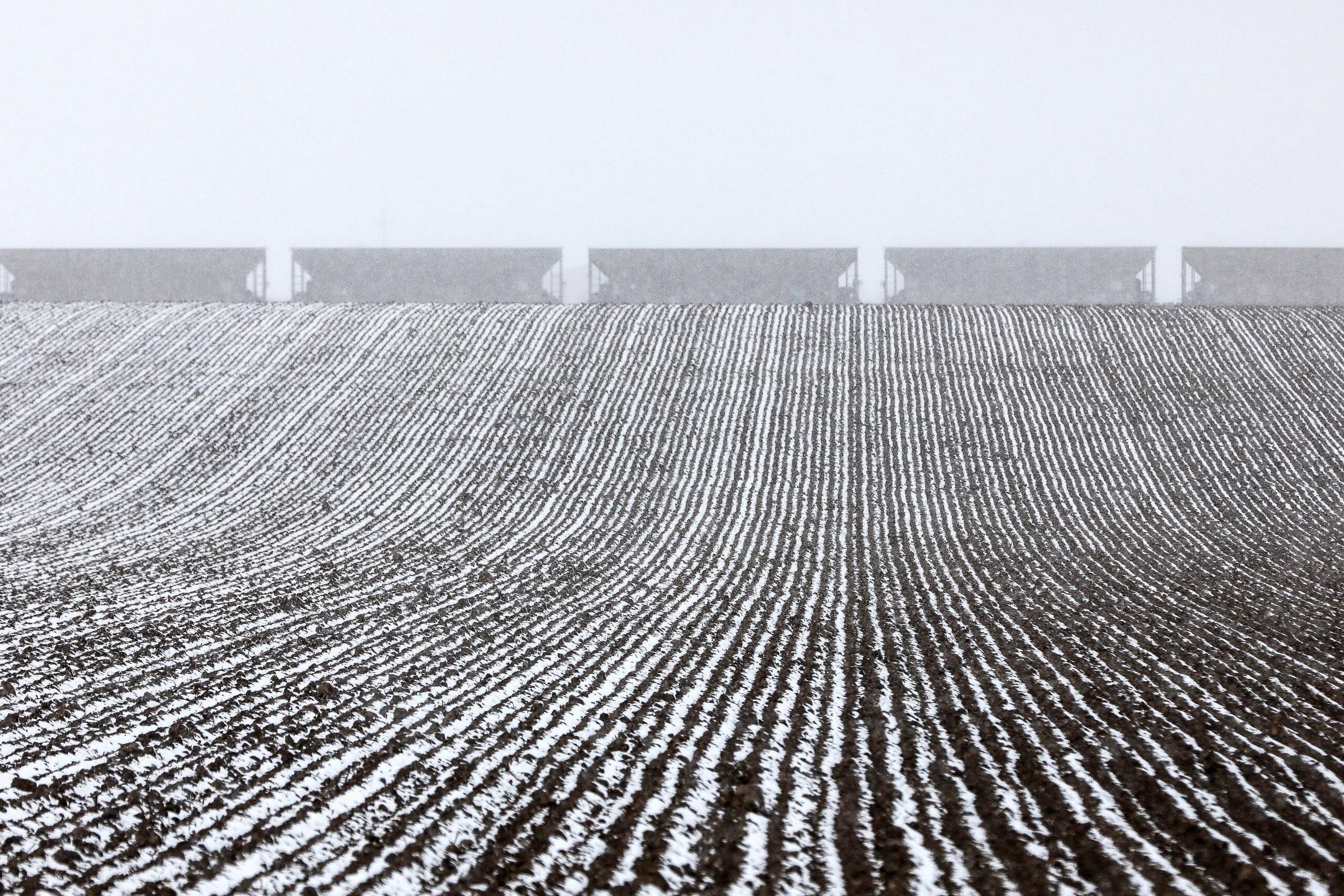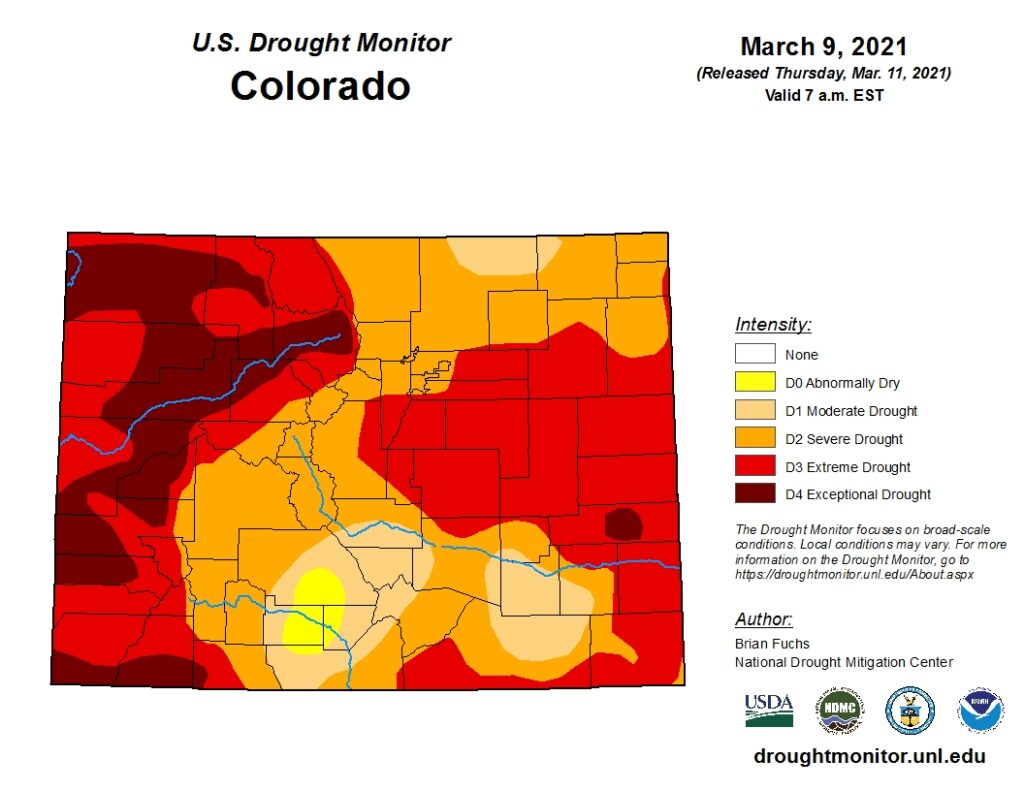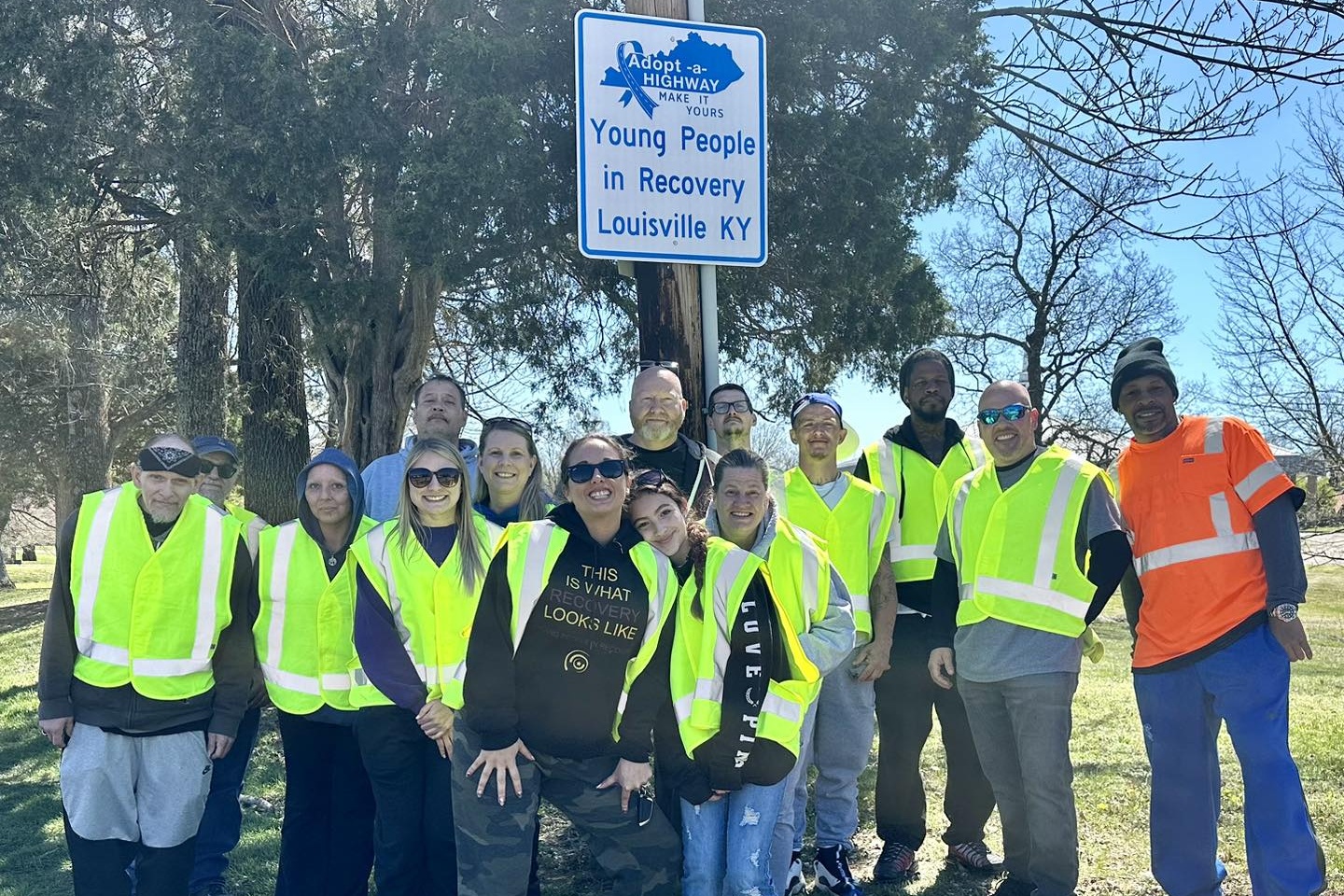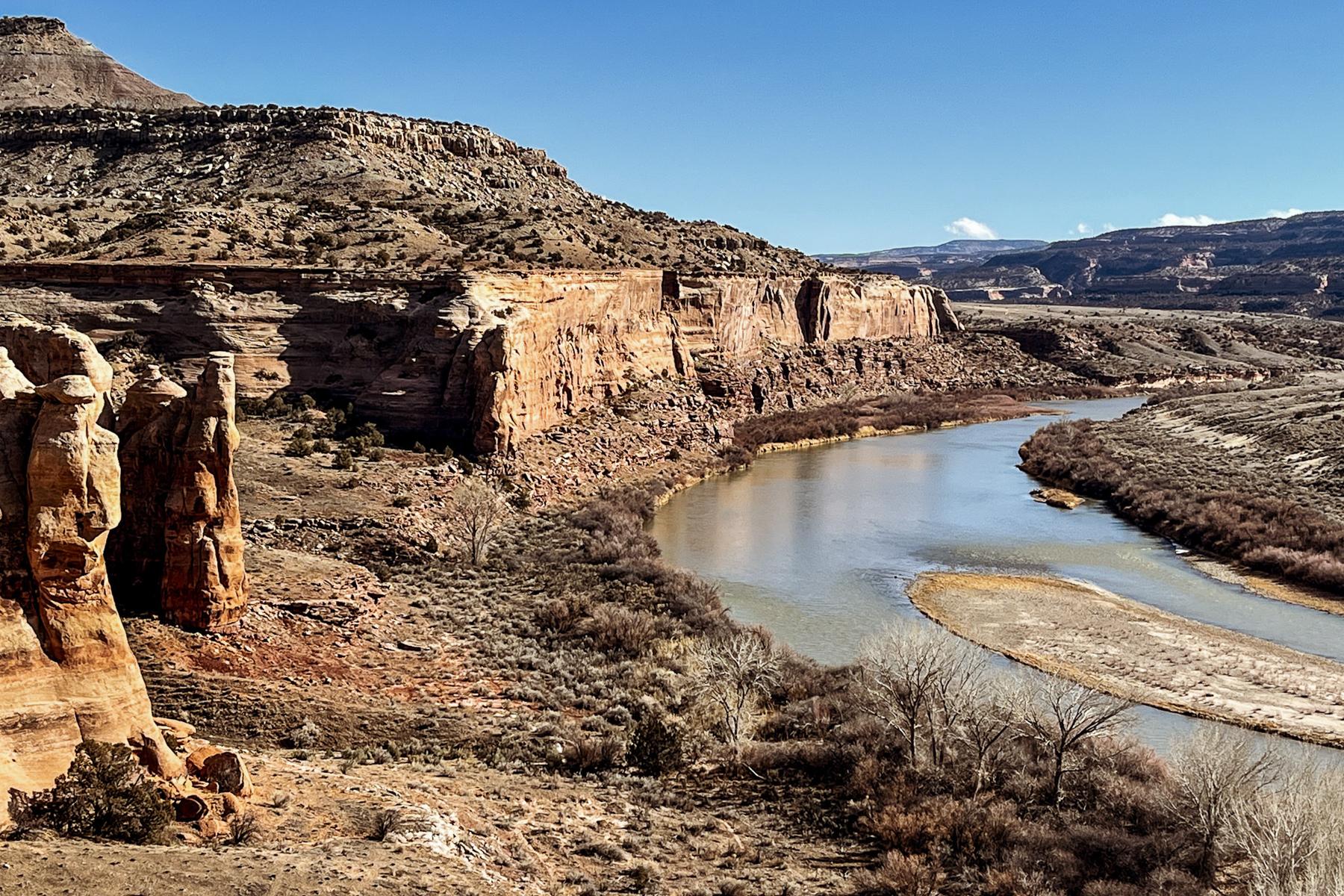
As Colorado digs out from the recent blizzard, each heavy shovel full of snow proves the storm brought plenty of moisture. But is it enough to free the state from its drought conditions?
Russ Schumacher, the Colorado state climatologist, said the answer largely depends on location. The brunt of the storm hit east of the Continental Divide, dumping around two feet of snow in the Foothills and Eastern Plains. Meanwhile, preliminary snowfall reports show only a few inches accumulated on the Western Slope.
“In those parts of the state, this storm wasn’t all that meaningful,” Schumacher said. “Here on the Front Range, it was a major one.”
Colorado’s drought conditions had improved ahead of the storm. After record dry weather over the summer and fall, snowpack levels had inched toward normal throughout the winter, but western Colorado continued to miss out on the snowfall. According to the U.S. Drought Monitor, about 16 percent of the state faced the most extreme category of “exceptional drought” as of last week. Most of that area was west of the Continental Divide.

Karl Wetlaufer, a hydrologist from the Natural Resource Conservation Service, said the weekend storm brought the entire state to 91 percent of its median snowpack for mid-March.
“This recent storm was really good not only as far as snow depth, but was a really wet, heavy snowfall,” Wetlaufer said.
The additional moisture wasn’t spread evenly, though. At midnight March 14, the South Platte River basin and Arkansas River basin had nearly hit their expected level of snowpack. River basins west of the divide remained as much as 19 percent below normal.
Wetlaufer said soil conditions could also affect Colorado’s downstream water users. Last year’s dry weather left the ground so parched it could absorb large amounts of snowmelt. Wetlaufer said that could decrease runoff levels by as much as 20 percent, meaning the recent snow could stay in Colorado rather than flowing down the Colorado River to Las Vegas or Los Angeles.
The recent snowstorm also likely won’t change a longer trend toward drier weather in the Southwestern U.S. A 2020 study in Science suggests the region is experiencing its worst “megadrought” since the 1500s due to global climate change. Any shift against the pattern would require a series of far wetter winters across the region.
Nevertheless, Schumacher said it’s hard to see the recent storm as anything other than good news.
“It may not be enough to get us out of the drought completely, but it’s going to be a big help,” Schumcher said.









